Leonardo transformed his flat-canvas into a three-dimensional virtual image in perfect perspective and the rest is history.
In this paper we will argue that Leonardo Da Vinci used an unconventional and previously unknown easel construction to create his art. Further, we will demonstrate that when Leonardo’s art is observed through his respective easel, the true nature of his work is revealed.
Accordingly, please let this paper and all claims made herein represent an open invitation for peer review. Commentary, confirmations and findings are accepted for inclusion in future publications with accompanied citation at: peers@davinciseasel.com
Asserted in this paper:
• Leonardo Da Vinci used an unconventional and previously unknown easel design as an artistic tool for painting in perfect perspective.
• Leonardo painted while standing behind his canvas as opposed to directly facing his canvas, creating artistic anomalies decipherable only through his particular easel construction.
• Leonardo left clues to his religious beliefs in his art, simultaneously ensuring creative freedom while permitting self-expression and eluding papal repercussion.
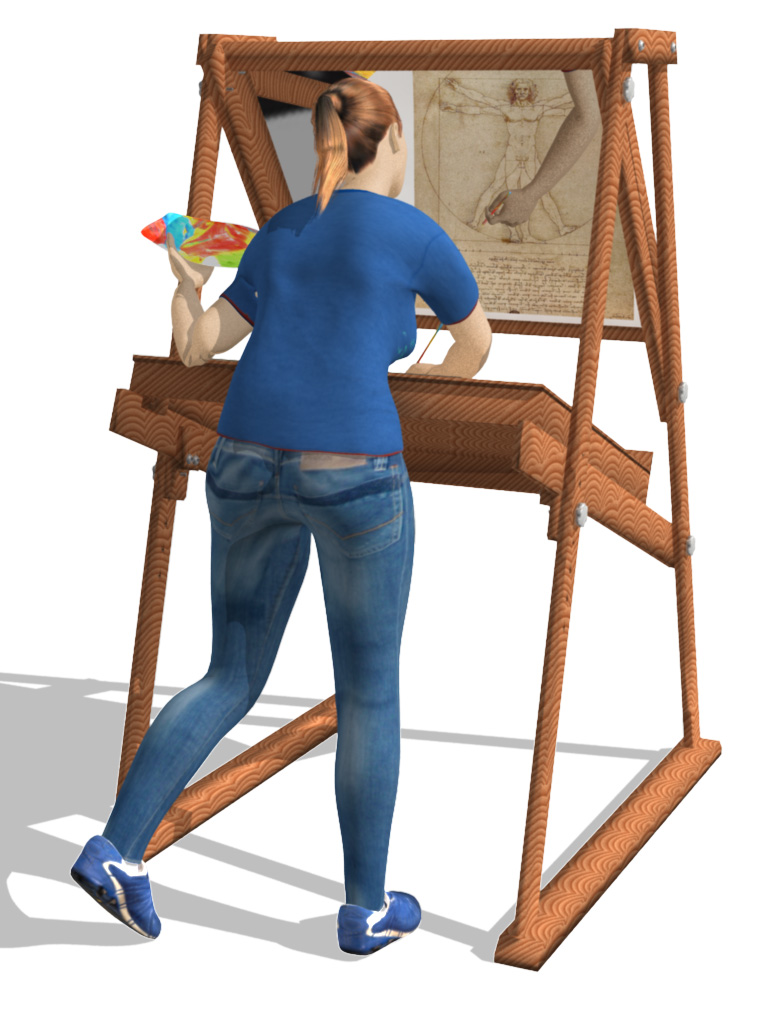
What is Da Vinci’s Easel?
Da Vinci’s Easel is a multi-part painter’s easel with a mirror mounted at a 55 degree angle facing the painter. The canvas, directed towards the mirror (and away from the painter) sits at a 15 degree incline. The painter then approaches the easel from behind the canvas and paints while observing the newly created virtual canvas in the mirror. Never once looking directly at the canvas below, until the artwork is completed.
How Does Da Vinci’s Easel work?
Da Vinci’s easel operates on three main principles of perspective: Depth Preservation, Perspective of Diminution and Objective Perspective. These concepts intriguing as they may sound break down into simple concepts of light.
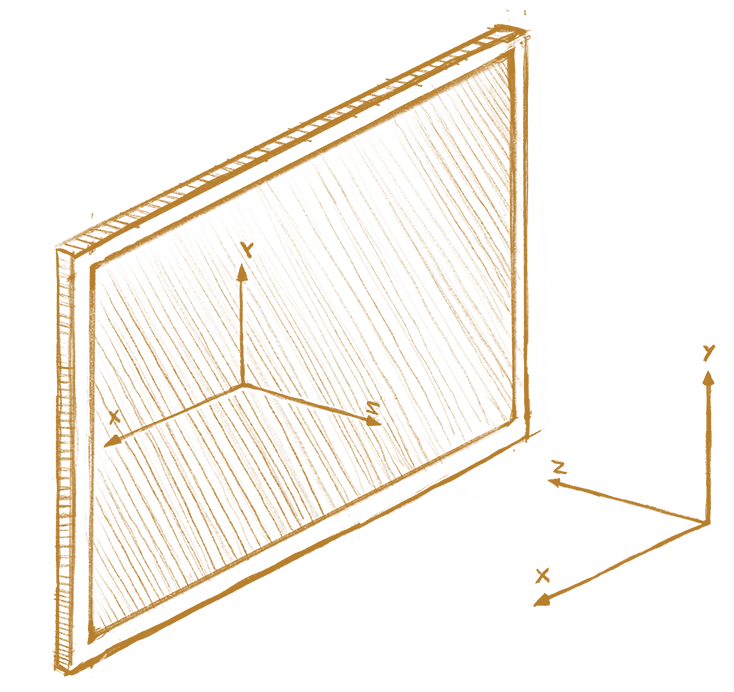
Depth Preservation
Flat (or plane) mirrors reflect 100% of the objects placed in their line of sight. Thereby conserving all dimensions, including the dimension of depth presented by the (Z) axis. This preservation of depth allows Da Vinci’s Easel to capitalize on the alignment between mirror and canvas creating a three-dimensional virtual image inside the mirror.
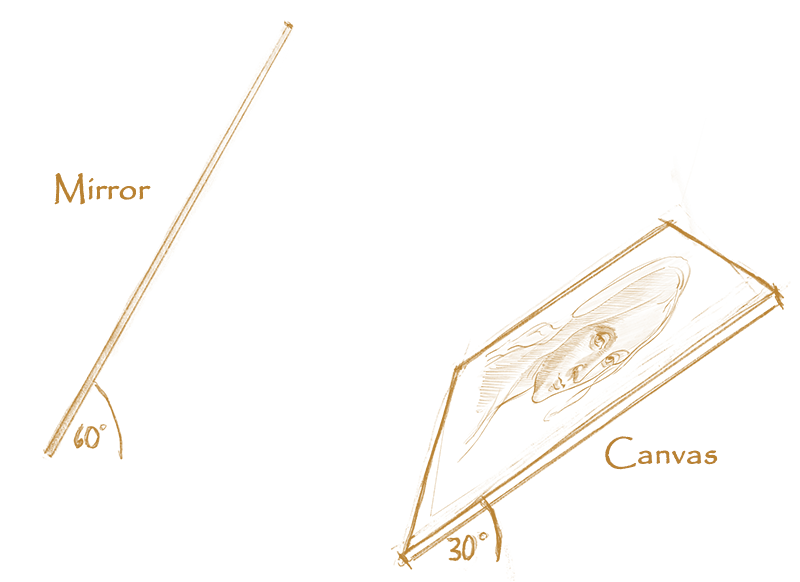
Perspective of Diminution
Elevation, the gradual increase of height, creates the perception of an object receding from the eye. While adding depth to the canvas along the (Z) axis, elevation transforms the reflected canvas into a receding three-dimensional virtual work space in perfect perspective.
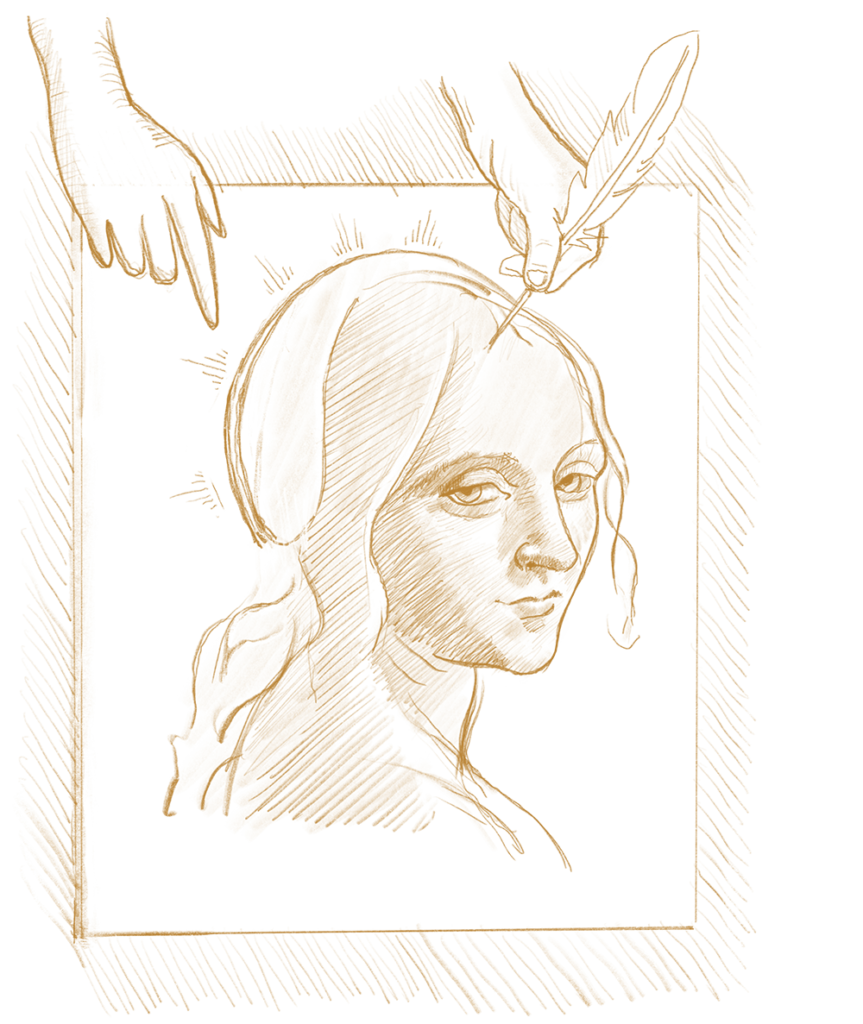
Objective Perspective
We all know, beauty is in the eye of the beholder, as-is the subjective interpretation of art. However, Leonardo flips this perspective by standing behind his canvas, enabling painting from an objective perspective. Directly aligning his perspective with the perspective of his art, creating an emotional connection with each piece unattainable when painting while standing in front of the canvas.
How Was Da Vinci’s Easel Discovered?
Da Vinci’s Easel was reverse engineered through 5 years of research by Payton J. Lowe, CEO of Da Vinci, Inc. With research emerging from the hypothesis that Leonardo’s mirror script is a result of Leonardo’s technique, and not a carefully planned method of concealment as commonly interpreted. From this premise, a mirror based easel was tested in various configurations leading to the discovery of Da Vinci’s Easel.
Are We 100% Sure this is Da Vinci’s Easel?
Yes, and the irrefutable evidence is confirmed by Leonardo’s own hand. There is general agreement that Leonardo Da Vinci was left handed. This observation seems obvious due to the left leaning slant of his hatching lines. However, Leonardo’s hatching lines; the parallel lines used for shading, confirm Leonardo’s use of Da Vinci’s Easel.
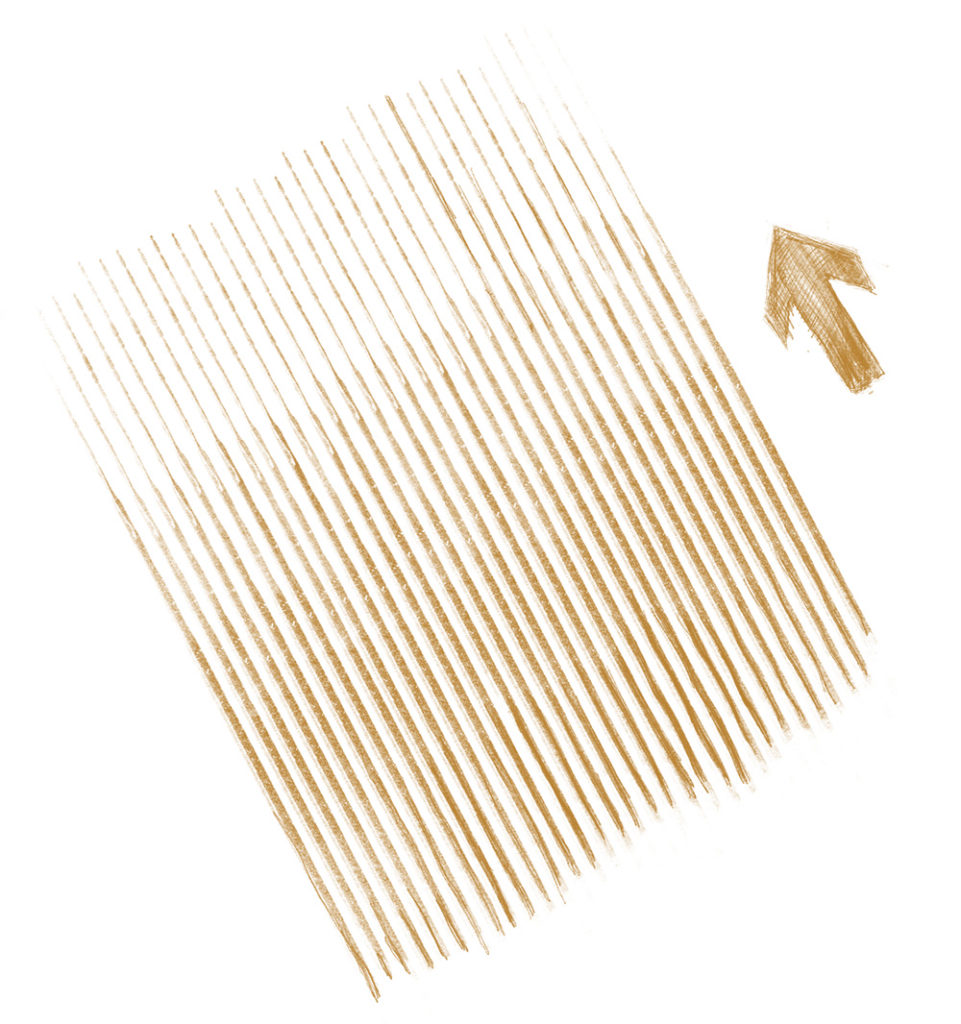
The Proof is in the Hatching
Widely accepted is the distinctive pattern created as hatching lines are sketched. With a darker intensity at the onset, while becoming lighter as the shape of the hand moving pulls the utensil up from the page. However, Leonardo’s hatching begins lighter and ends darker. That is, towards the top of the page, Leonardo’s hatching is coming to an end. This pattern can only be created by an artist sketching from behind the canvas. Reaching over the head of the canvas, as demonstrated by the used of Da Vinci’s Easel.
What Does Da Vinci’s Easel Reveal that was Previously Unknown?
Clearly Leonardo Da Vinci could not publicly share his particular religious beliefs due to their conflict with accepted church dogma. Fittingly, through iconographic analysis we can decipher the reoccurring religious statements throughout Leonardo’s work. Interesting religious messages have been carefully concealed using a rebus made of directional cues, objects and symbols; Leonardo paints a perfect pictorial message inside each work. Hidden in plain sight, decipherable through the use of Da Vinci’s Easel, to be discussed in future publications.
About Da Vinci, Inc.
Dedicated to the discovery, education and progression of the systems, teachings and methods of Leonardo Da Vinci. Based in Colorado Springs, Colorado, Da Vinci, Inc. manufactures and distributes Da Vinci’s Easel™, publishes a book on the current discoveries found inside Leonardo’s work, along with life-size replicas of Leonardo’s inventions. For further information or to connect with Da Vinci, Inc. please visit us online at DaVinciInc.com. Da Vinci’s Easel™ is patent pending.




